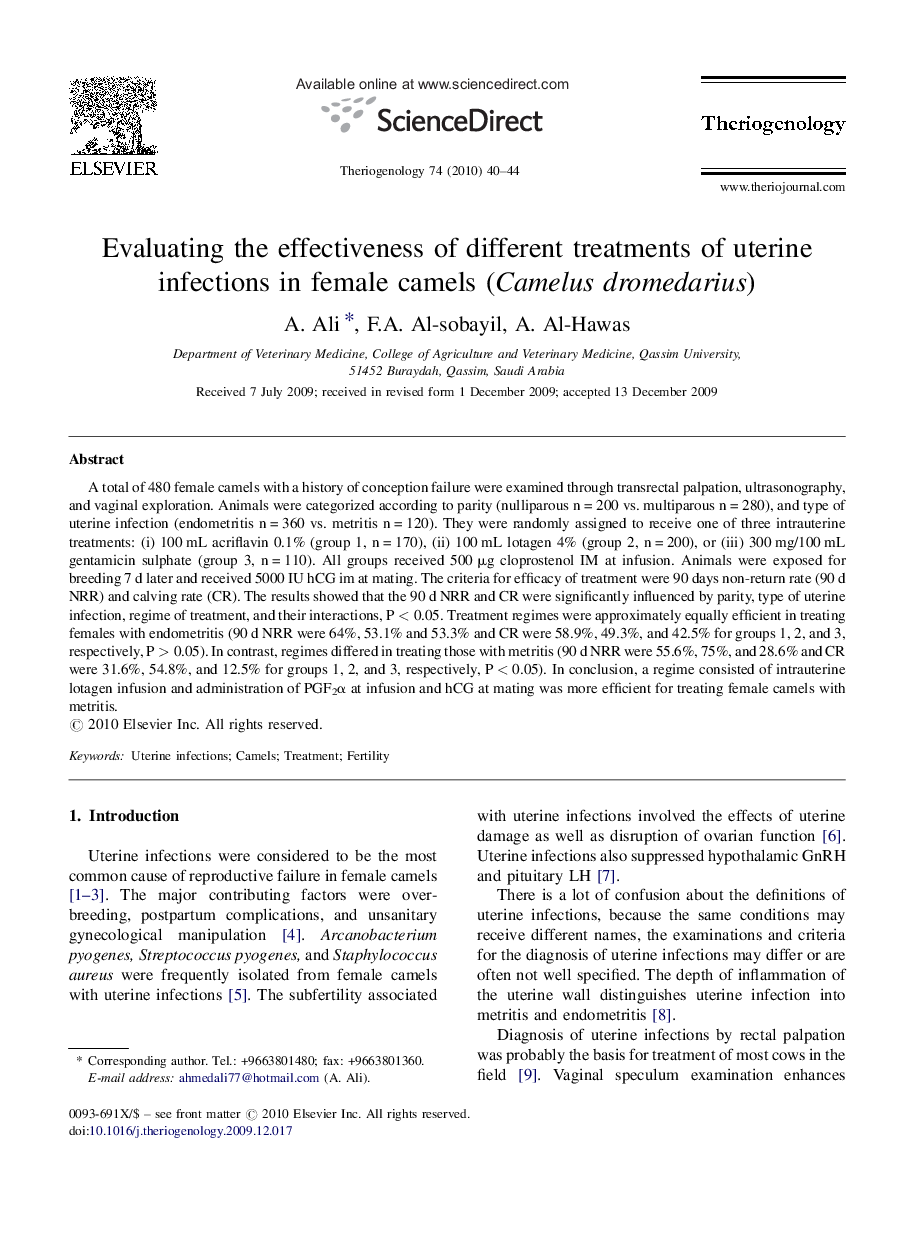| کد مقاله | کد نشریه | سال انتشار | مقاله انگلیسی | نسخه تمام متن |
|---|---|---|---|---|
| 2095524 | 1082124 | 2010 | 5 صفحه PDF | دانلود رایگان |

A total of 480 female camels with a history of conception failure were examined through transrectal palpation, ultrasonography, and vaginal exploration. Animals were categorized according to parity (nulliparous n = 200 vs. multiparous n = 280), and type of uterine infection (endometritis n = 360 vs. metritis n = 120). They were randomly assigned to receive one of three intrauterine treatments: (i) 100 mL acriflavin 0.1% (group 1, n = 170), (ii) 100 mL lotagen 4% (group 2, n = 200), or (iii) 300 mg/100 mL gentamicin sulphate (group 3, n = 110). All groups received 500 μg cloprostenol IM at infusion. Animals were exposed for breeding 7 d later and received 5000 IU hCG im at mating. The criteria for efficacy of treatment were 90 days non-return rate (90 d NRR) and calving rate (CR). The results showed that the 90 d NRR and CR were significantly influenced by parity, type of uterine infection, regime of treatment, and their interactions, P < 0.05. Treatment regimes were approximately equally efficient in treating females with endometritis (90 d NRR were 64%, 53.1% and 53.3% and CR were 58.9%, 49.3%, and 42.5% for groups 1, 2, and 3, respectively, P > 0.05). In contrast, regimes differed in treating those with metritis (90 d NRR were 55.6%, 75%, and 28.6% and CR were 31.6%, 54.8%, and 12.5% for groups 1, 2, and 3, respectively, P < 0.05). In conclusion, a regime consisted of intrauterine lotagen infusion and administration of PGF2α at infusion and hCG at mating was more efficient for treating female camels with metritis.
Journal: Theriogenology - Volume 74, Issue 1, 1 July 2010, Pages 40–44